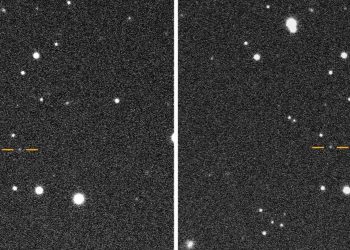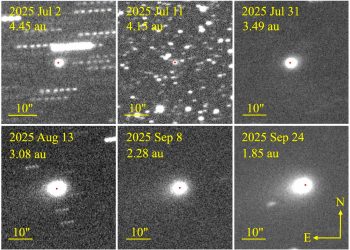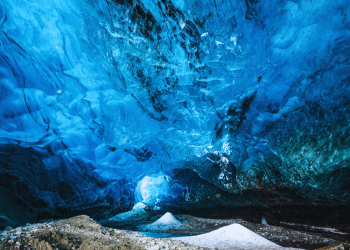The Earth was a burning mass of lava and rock before it took on the shape it has today, and scientists have discovered traces of this very first “proto Earth” for the first time, hidden in the deepest and oldest rocks on our planet.
The clues have survived about 4.5 billion years, so it’s an astonishing discovery. The international team of researchers behind this discovery compares it to picking a single grain from a bucket of sand.
As small and old as these traces are, they can now be used to explore the environmental conditions that would have dominated Earth when it was still a brand new planet. This discovery could also help reveal how planets like ours might have come into existence.
Related: Canada’s 4-Billion-Year-Old Stripey Rocks May Be Oldest on Earth
“This may be the first direct evidence that we have preserved proto-Earth materials,” says geochemist Nicole Nie of the Massachusetts Institute of Technology (MIT). “We see a piece of the very ancient Earth, even before the giant impact.
“This is surprising because we would expect this very first signature to be slowly erased over the course of Earth’s evolution.”
This proto Earth only existed for a short time: perhaps around 100 million years. At that time, a huge collision with a Mars-sized meteorite called Theia changed the composition of our planet and gave us the Moon as our immediate neighbor.
Nie and his colleagues were looking for a potassium-40 isotope deficiency. An earlier study of meteorites identified variations in this element as a suitable way to establish the origin of rocks, comparing them with other rocks found on Earth from elsewhere in the solar system.
“In this work, we found that different meteorites have different isotopic signatures of potassium, which means that potassium can be used as a tracer of Earth’s building blocks,” says Nie.
Through detailed analysis of ancient rock samples from Greenland, Canada and Hawaii – where volcanic activity brings up material from deep within the mantle – researchers discovered a unique potassic signature that had never been observed before.
This chemical signature or fingerprint does not appear in studies of other significant impacts on Earth, nor in geological processes currently occurring on our planet. The most likely explanation: these rocks are remnants from the dawn of Earth’s history.
Computer simulations based on data from existing meteorites showed how these rocks would have been altered by 4.5 billion years of geological aging and further collisions. These changes were then compared to the signature found by the team – further evidence that this material comes from proto Earth.

There’s another takeaway from this research: There are types of meteorites that we haven’t found yet. Earth’s proto-rock must have come from somewhere, because clumps of gas and dust gradually formed the planet, and that’s a topic that future studies could look into.
“Scientists have attempted to understand the original chemical composition of the Earth by combining the compositions of different groups of meteorites,” says Nie.
“But our study shows that the current inventory of meteorites is not complete and that there is still much to learn about the origin of our planet.”
The research was published in Natural geosciences.









